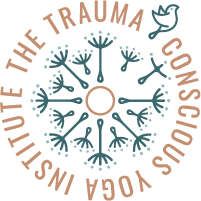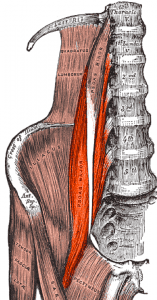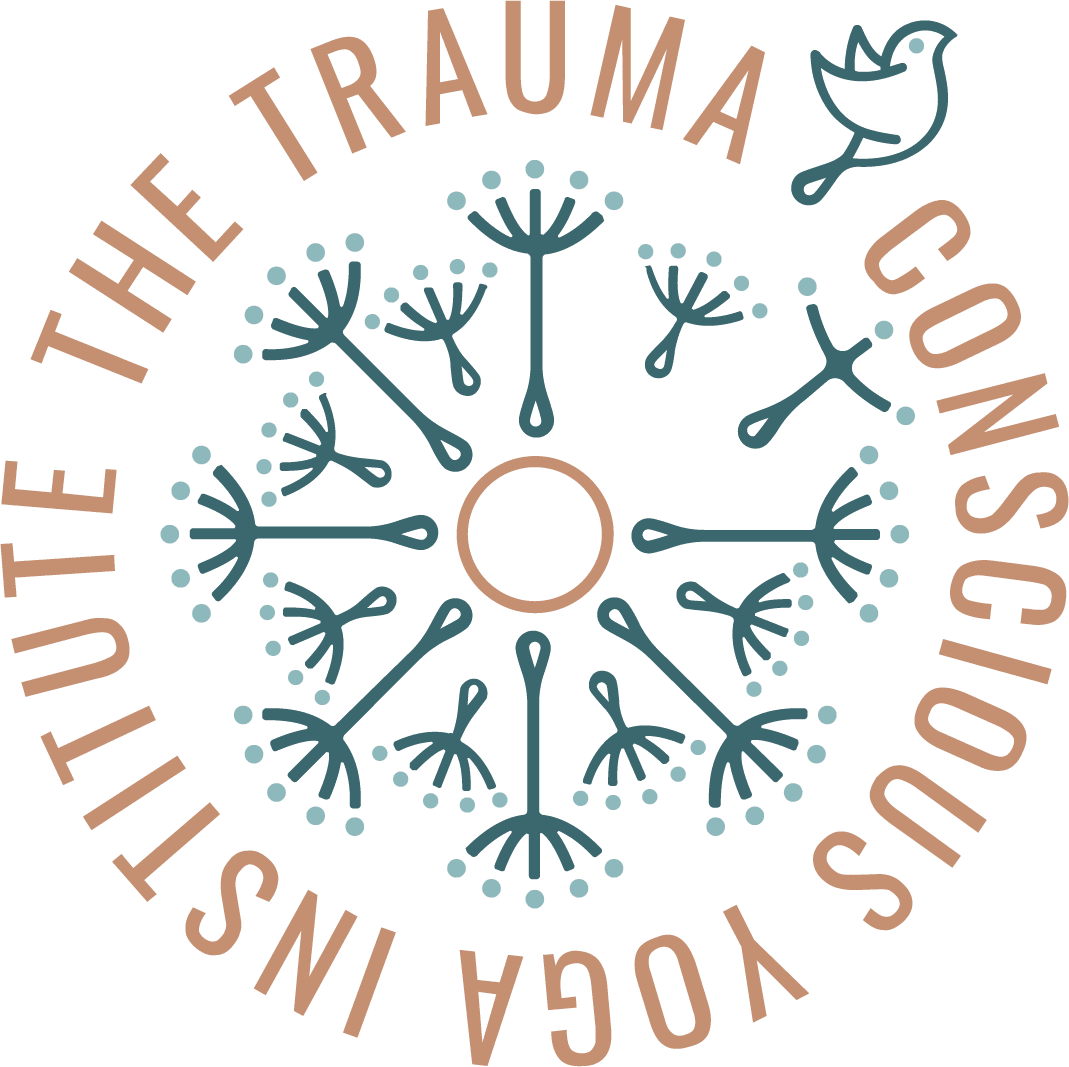*Note to reader: In reading and hearing about trauma there is the potential to be triggered. Please take care of yourself. Not this article nor a yoga practice are replacements for a one-on-one relationship with a licensed mental health professional. Please visit www.psychologytoday.com to find a licensed professional in your area.*
The Psoas Muscle, also referred to as The Muscle of the Soul, holds onto traumatic experiences on a cellular level. Releasing it with the right yoga poses can help the body process through and release trauma responses that have been locked within for years.
Psoas, so huh?
I’ve seen many a scrunched up face and look of confusion when I’ve mentioned the psoas at trainings and talks. Let’s all get on the same page and start with what the heck the psoas (pronounced, so-as), is.
First off, we have two of them. The psoas are muscles that originate at the 12th thoracic vertebrae (mid-back) and the 5th lumbar vertebrae (low back) on either side, run through either side of the pelvis, and insert at either side of the lesser trochanter of the femur (inner thigh bone at the hip). No other muscles in our body connect our torso to our legs- the psoas have a big responsibility! Their responsibility includes:
*Flexing the hip joint- think about the action of bending one knee toward the chest; think about the action that occurs at the front of the hip when riding a bike, or walking up stairs
*Flexing the torso- think, bending forward to pick something up off the ground
*Stabilizing our spine- think, sitting with good posture or standing upright
The psoas muscles are also our deepest core muscles! We truly need our psoas for day-to-day functioning. A tense, restricted, tight, or neglected psoas can’t do its job and other muscles like the back and shoulders work overtime to compensate. This leads to low back pain, shoulder and upper back pain, pelvic pain, and overactive quadriceps muscles. The psoas also have a role in our breathing, as they attach to the diaphragm via connective tissue.
….coming up I’ll talk about how we can release a stressed and constricted psoas, but first, let’s look at it’s relationship to trauma.
How the psoas relates to sexual trauma:
This is where it gets interesting. As the psoas is responsible for keeping us upright, a necessity of our very nature and way of life, the psoas become the protector of our center of gravity at the very core of our being. The psoas are linked to our reptilian brain- the oldest part of our brain that consists of the brain stem and the spinal cord. The reptilian brain relates to our primitive selves.
The psoas muscles embody our survival instincts and primal urges and
could well be called the fight or flight muscles of the human anatomy.
During traumatic experiences, as the nervous system (which includes the brain) receives the threatening information that the body is being attacked, the body goes into high-alert and the psoas muscles tighten and contract as a means of defense and protection. During sexual trauma in particular, the psoas is highly compromised, forced to comply with the physical and emotional strain willed against it.
While tense shoulders or sore feet may benefit from a hot bath soak or rest, the psoas is more complex. Each new triggering event (these can be events that are merely stressful and not fully traumatizing) creates additional tension as the psoas remembers what it learned during the original traumatic event: when my body is attacked, I must harden my shell to protect it.
Psoas pain is not generally localized to the hip area. We typically experience the pain that results from a contracted psoas indirectly, meaning it isn’t your psoas that hurts, but rather adjacent areas such as the shoulders, upper back, or lower back. Women with sexual trauma and a contracted psoas may experience pain during intercourse as a result of the psoas’ conditioned, high-alert state.
Freeing Locked Trauma from the Body
In our society it is commonly thought that we should “get over it,” or “move on,” and in effect, ignore the trauma that we have experienced- push it down deeper and deeper. In a rush to return to a life as usual or “deal with my own problems” the psoas is left in a stressed state. Attempts to avoid addressing our traumatic pasts may seem to work temporarily, as we distract away pain out of our window of awareness. The trauma is still there subconsciously, and fragmented in memory, and eventually it shows up somatically (through the body) because it still exists there in the body, on a cellular level.
Yoga to release the psoas and unlock trauma from the body:
You may have heard that “hip openers” in yoga unlock our emotions. And after recognizing that the psoas stores trauma in this way, it’s not hard to see why.
Gentle hip opening yoga poses are a soothing and effective way to release tension from the psoas muscles.I always recommend working with an experienced yoga therapist or yoga teacher first before trying yoga practices on your own. It’s also important to be mindful that when practicing hip openers emotions can come rolling up to the surface. Allowing ourselves to feel these emotions is what helps us heal, and if it would better serve you to have someone there for support, please be sure to get that support before trying the yoga poses below.
If you are personally interested in learning how to support yourself and others in healing and resolving trauma from within the body, consider joining me for certification in The Trauma-Conscious Yoga Method (here).
Two Simple Poses to Release the Psoas:
Reclined Knee to Chest Pose (Pavanamuktasana)
- Begin by laying on your back. Use a rolled up towel underneath your neck if your head and neck need more support.
- Bend both knees and place feet flat on ground. Pause and take five cycles of deep breath (1 inhale and 1 exhale = 1 cycle)
- Keeping the left foot on the floor, gently bend the right knee into the chest and interlace your fingers around your right shin or back of thigh. (Optional: extend the left leg on the ground. Only take this option if it does not strain the lower back. We are releasing the psoas very effectively without adding this option).
- Take 5-10 deep cycles of breath here.
- Return to prep position: Both knees bent, both feet flat on ground, and take 5 cycles of deep breath before moving to the second side, drawing the left knee into the chest.
Note: This pose can also be done seated in a chair or standing, bending one knee at a time into the chest.
Wisdom Pose (Ajna Chakra Asana): More commonly called Child’s Pose (Balasana)
- Come to a kneeling position with knees slightly apart and big toes touching. Try to untuck the toes so the tops of the feet are flat to the ground.
- Lean torso forward. Stack one hand on top of the other and place the forehead on the hands. *If the hips cannot come to heels, no worries, place a folded up blanket or bolster between calves and backs of thighs or try the chair modification listed below
- Allow your third eye (ajna chakra), the center of the forehead, to rest into the hands
- Take 10 cycles of deep breath, allowing the rib cage to expand out and toward the inner thighs on the inhalation (like an accordion expanding), and allowing the rib cage to contact in on the relaxing exhalation
Note: This pose can also be done using a chair: Kneel facing a chair with padding (try a blanket) under your knees, if needed. Try keeping your hips connected to your heels as you lean forward and stack your hands on the seat of the chair. Lay your head on your hands. As mentioned above, if your hips cannot stay on your heels, place pillows or a blanket on top of your calves so that your hips can rest on these supports.
You might allow this practice to become a part of your daily self-care ritual. Think about cultivating the qualities of patience, trust, and compassion for your body and the process.
Listen to and practice this mindful body scan audio after wisdom pose if you’re interested in continuing the journey toward a state of ultimate rejuvenation and relaxation.
If you’re feeling the call to get certified in trauma-conscious yoga and somatic healing, consider enrolling in The Trauma-Conscious Yoga Method certification training (here). Or learn more about TCYM with this free webinar (here).


